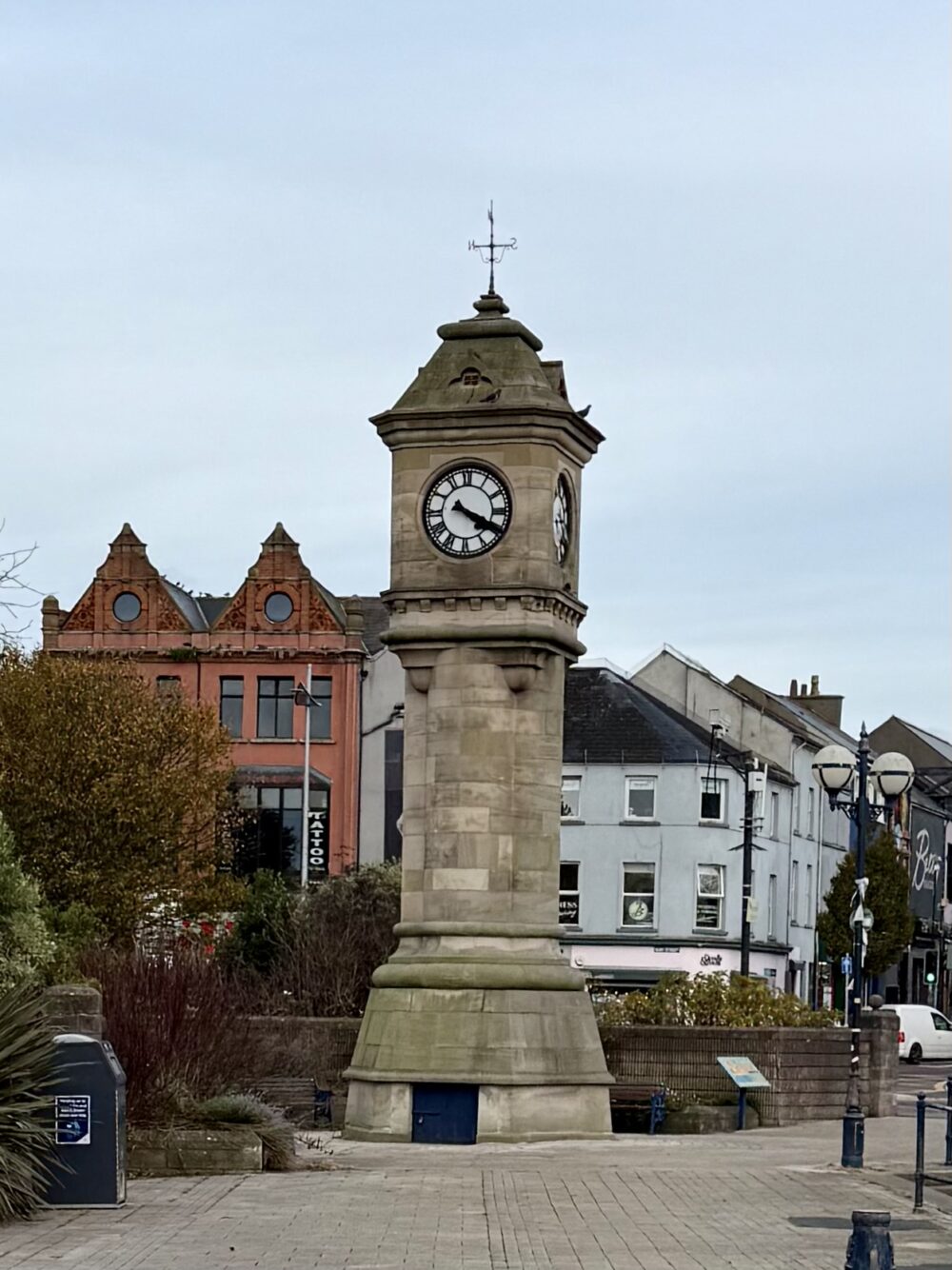Tick tock, McKee Clock

This is Bangor’s McKee Clock, unveiled in 1915. It’s known as the McKee clock as the local tax collector, James McKee, contributed £200 towards its cost.
It was not uncontroversial, particularly its location. The site which was eventually chosen formerly hosted the town’s bandstand. The Herald and County Down Independent of 17 April 1914 records some disagreement at a Council meeting about whether the bandstand should really be moved:
“The proper site for the McKee clock is on the present bandstand site … There is no need for a bandstand at all in the esplanade.”
“By no means; oh dear no. Bangor must always have a pierrot troupe and the best obtainable too, at that.”
“But a bandstand is for a BAND.”
This raises a question: what the heck is a pierrot troupe, and is it really so bad for it to be in a bandstand?
Originally, Pierrot was a stock character of a sad clown, frequently appearing in Italian pantomime or comedy from the late 17th century.
In England, the name became adopted for troupes of vaguely clownish entertainers who would put on variety shows of song and comedy. They were a popular feature of seaside towns, often performing on piers, and some troupes travelled across to Ireland to perform. The form mostly died out in England in the 1950s, though National Museums NI has photographs of a show in County Down from 1962, so perhaps they lasted a little longer there. Performing in bandstands doesn’t seem to have been uncommon.
Anyway, the bandstand was moved to make way for the clock: it now stands in Bangor Castle’s Walled Garden. Ironically, the local newspapers feature many advertisements for band concerts at the McKee Clock thereafter, suggesting that—perhaps—the bandstand was better located before it moved.
But the clock was well received too.
